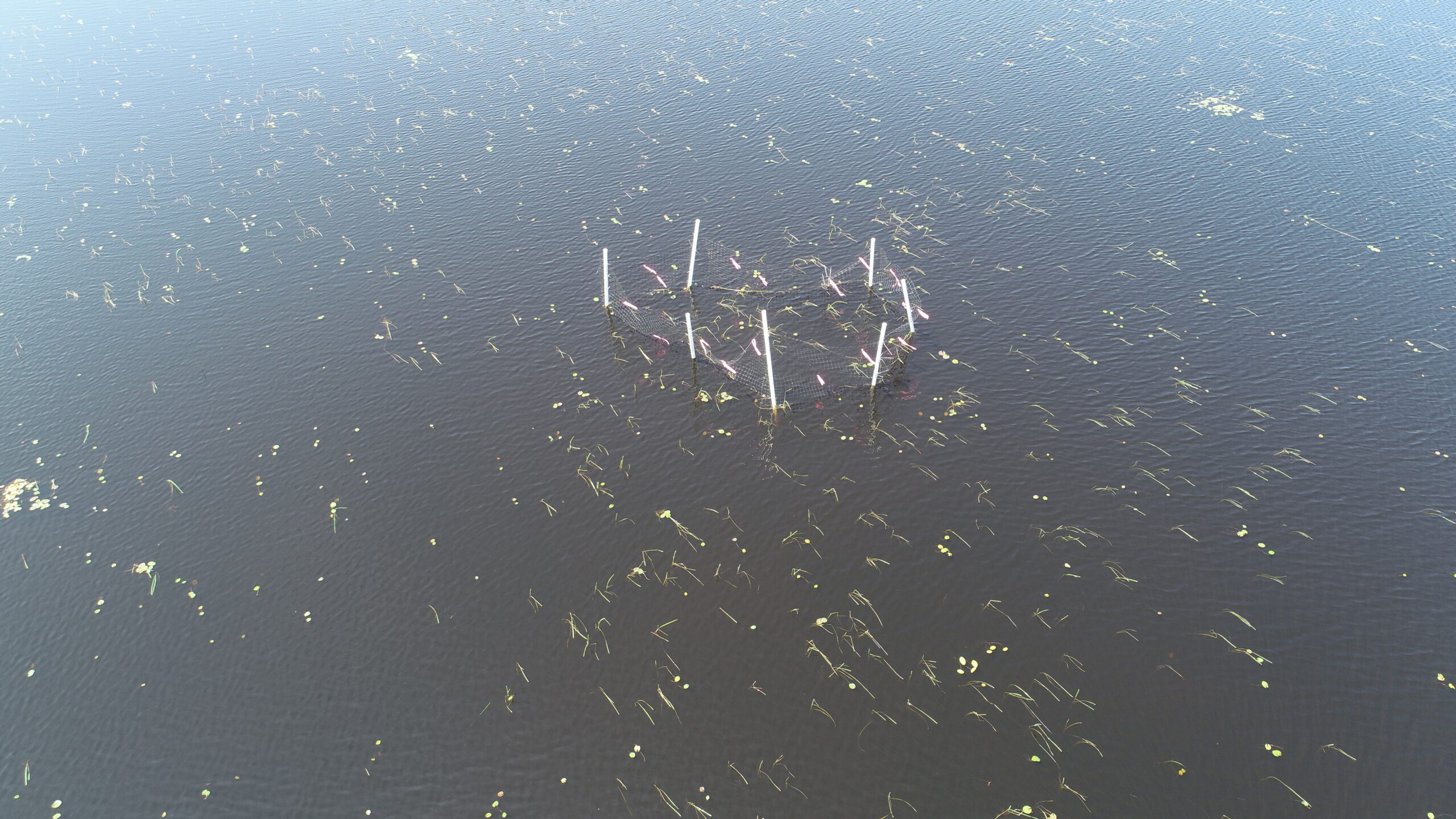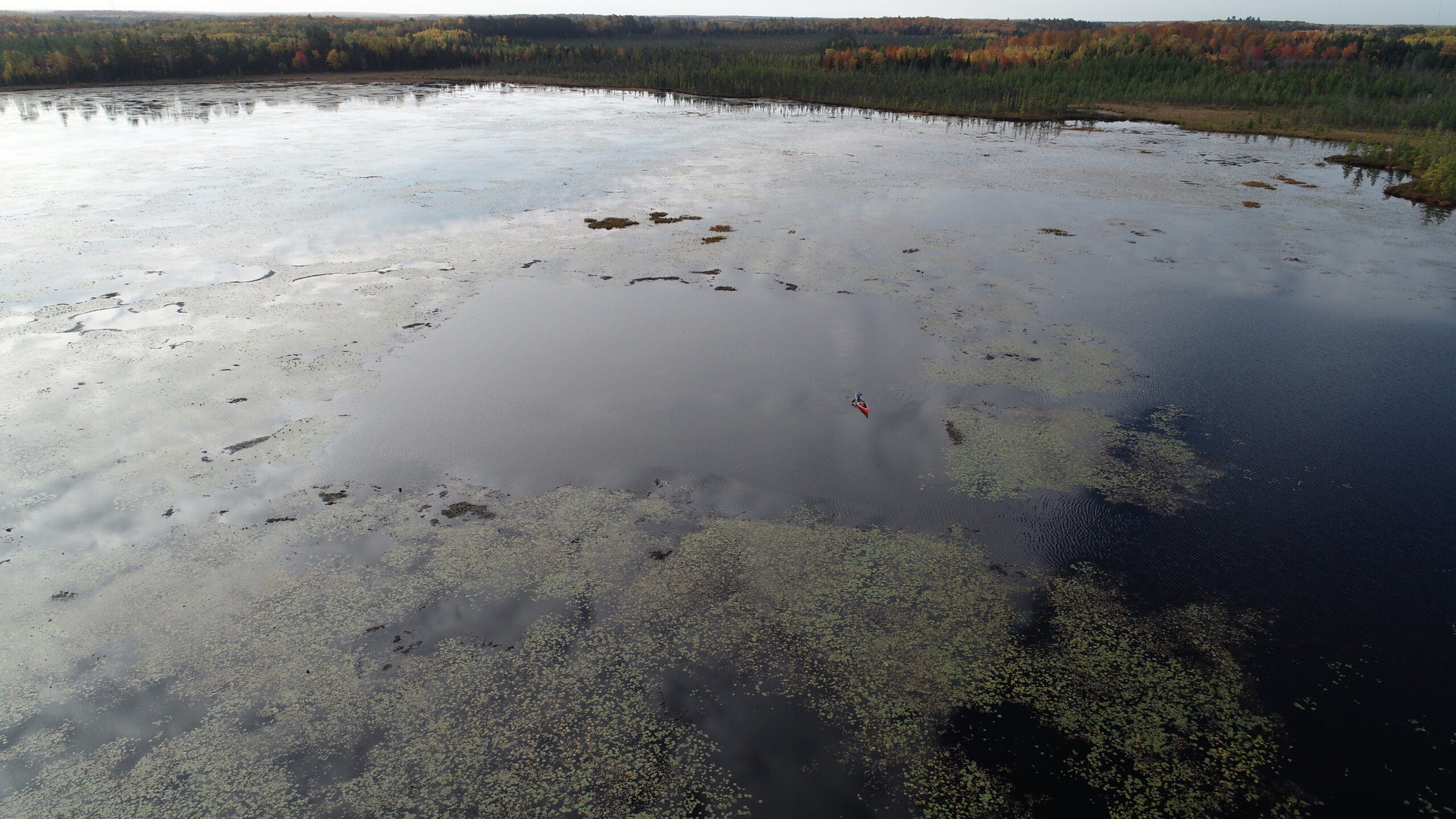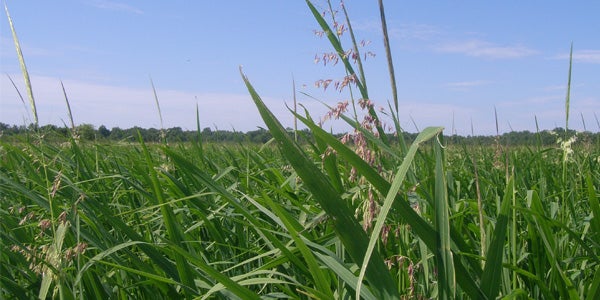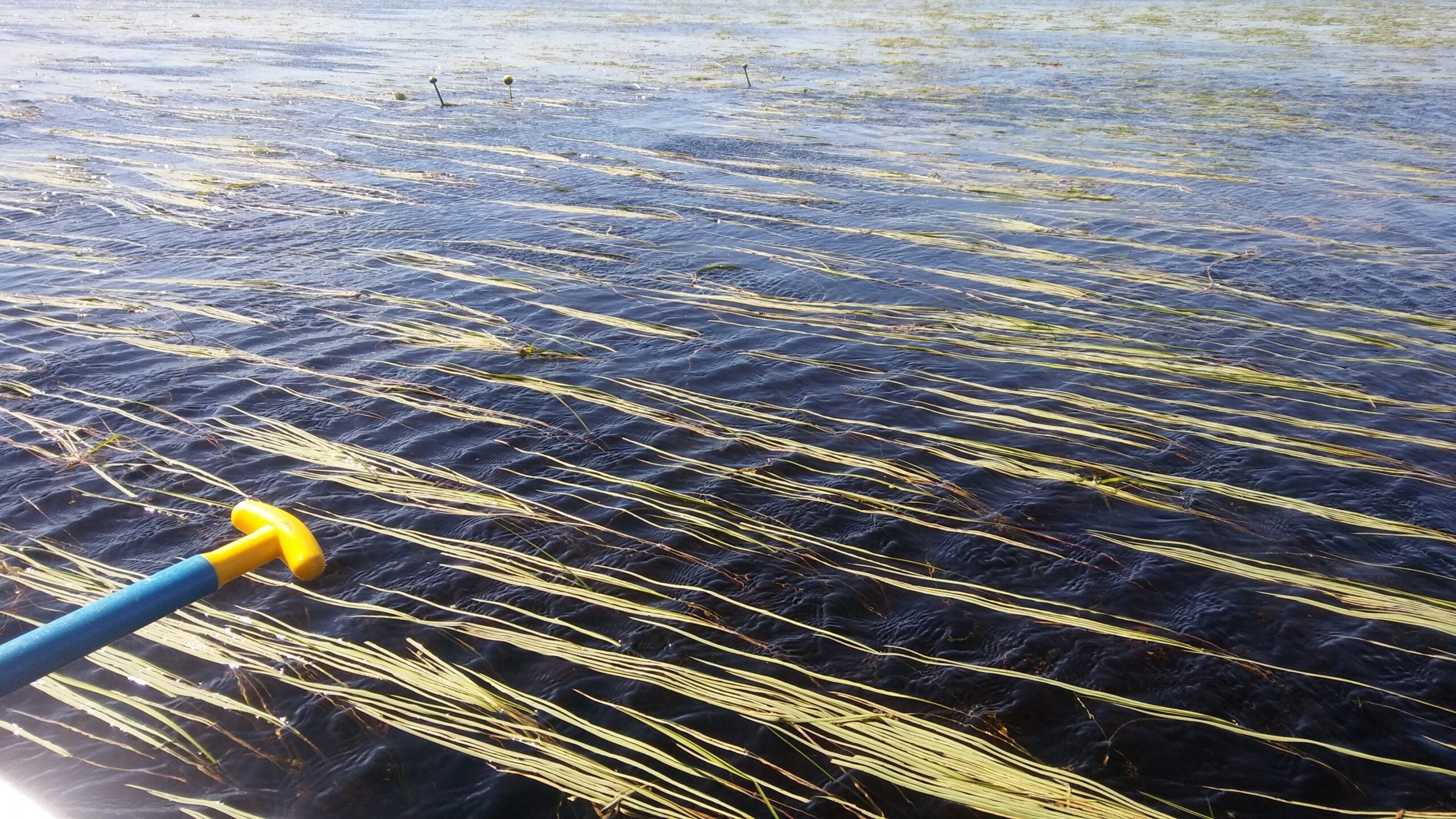Wisconsin’s Spur Lake in Oneida County was once abundant with wild rice, but two decades ago it all but disappeared. Tribal leaders and conservationists have been working in recent years to restore the grain known as manoomin in the Ojibwe language.
Carly Lapin is the district ecologist for North Central Wisconsin for the Department of Natural Resources’ Bureau of Natural Heritage Conservation. A couple of years after she took on that role in 2014, she heard concerns about the decline of wild rice on Spur Lake, a state natural area in Oneida County.
Historically, the site was important to tribal communities in the Mole Lake area who used to travel there for the annual harvest into the 1990s, Lapin said. Today there is hardly any rice on the lake, she said — but she and others from across the state are working to reverse that trend.
News with a little more humanity
WPR’s “Wisconsin Today” newsletter keeps you connected to the state you love without feeling overwhelmed. No paywall. No agenda. No corporate filter.
In 2019, the Northern Institute of Applied Climate Science and some members of the Wisconsin Initiative on Climate Change Impacts approached the DNR to create a climate adaptation workshop on Spur Lake.
That became a launching point to consider restoring wild rice under different climate conditions.
Since then, Lapin said the group has worked on removing beaver dams from the outlet creek, sampled the lake to understand the current vegetation and looked into infrastructure improvements. They also hired a contractor to do a hydrologic study of the lake going downstream to understand the history of the site and how it has changed over time.
“One thing I’ve learned is that I really didn’t have a good grasp on how sensitive wild rice or Manoomin is to climate change, and how much stewardship is really required for that species,” she said, as well as “how important it is to all sorts of local people and what sorts of partnerships and collaborations we can form to try and improve conditions and be better stewards for wild rice.”
Climate change, excess rainfall complicates wild rice restoration efforts
Through the contractor’s study, Lapin added, the team gained a better understanding of forces driving the decline in rice, most notably human-caused climate change. Warmer winters have reduced the lake’s ice cover, which means that while some vegetation such as lily pads thrive, other species such as wild rice can’t compete.
Water levels on the lake have risen and are now far higher than wild rice needs to flourish.
Scott Van Egeren, a water resource management specialist with the DNR, called the work an “amazing project” from a cultural, historical and ecological perspective. Wild rice is an important food source to humans and animals including water fowl, geese, swans and ducks.
Yet the unpredictability of climate change also complicates their research efforts.
“We want to understand how much we can restore it, given the constraints that climate change is putting on us at this point. And that may be that it’s hard to do because of changing hydrology,” Van Egeren said.
He said that while there is a 12-year fluctuation in groundwater levels in Wisconsin, even from 2010 to 2020 when water levels would have risen, the amount of wild rice plunged. This year, the water level has waned amid a dry summer, but the wild rice remains sparse, and it wasn’t always that way.
“If you can imagine the field of rice,” he said, “now it’s just a lake covered in lily pads.”
Nathan Podany, the tribal hydrologist for the SokaogonSokaogon Chippewa Community, said no rice harvest on the lake has occurred since about 2003.
“Due to humans moving in and different types of infrastructure severing connections such as roadways, culverts, and then just people living alongside some of these lakes, changing nutrient regimes, jet skis and boards adding wind and wave action that can easily rip up plants,” Podany said, “its extent across the state and region is somewhat limited now.”
He said excess rainfall can also spell trouble, as researchers are seeing brown spot fungal disease more frequently, something that occurs on hot and humid days and can wipe out wild rice.
The site has a rich history.
“I heard stories from elders stating that the last chief would actually shuttle committee members to the lake so they could camp along the side and harvest rice,” Podany said.

Podany said after clearing vegetation and debris, the DNR and Sokaogon Chippewa community prescribed four different circumstances for three different experimental plots on the lake. What became the Spur Lake Working Group purchased rice from Mole Lake and seeded it onto Spur Lake.
Lapin, the DNR ecologist, said this year rice has grown on the plots they seeded, but it’s still early in the project. If successful, their work could inform future DNR projects, but every site is different.
“At this point, everybody’s watching to see what happens,” Lapin said. “We’ll be collecting data for a couple seasons to see what the results are.”
Wisconsin Public Radio, © Copyright 2026, Board of Regents of the University of Wisconsin System and Wisconsin Educational Communications Board.


